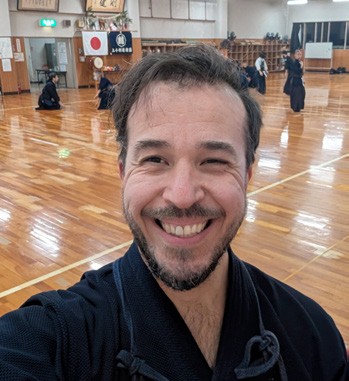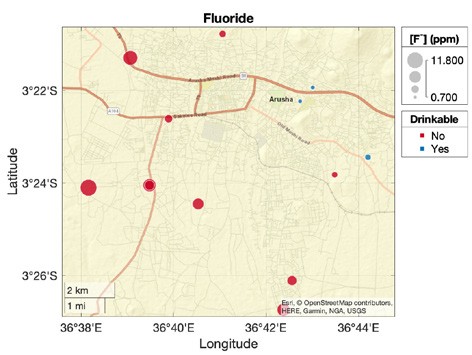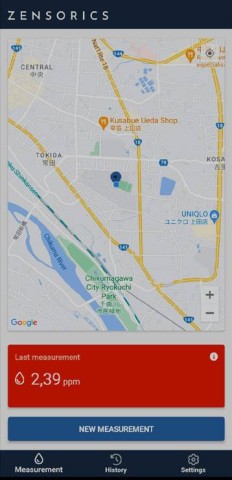Special Issue: Open Science in its many forms - Bringing safe water to rural communities: An Open-Source Arduino fluoride detector
Newsletter
Bionote
Eugenio H. Otal is an Assistant Professor at Shinshu University, Japan, specializing in materials chemistry, sensor development, and synchrotron radiation techniques. As Chair and founding member of the Japanese Chapter of the Marie Curie Alumni Association, he fosters regional collaborations through Asia Connect Meetings, uniting chapters from Japan, China, India, and Southeast Asia to advance research in environmental science, AI, and computing. With over five years in Japan, he developed metal-organic framework-based water quality sensors. Additionally, Eugenio has practiced martial arts for over two decades, holding a 2nd Dan in Aikido and a 1st Dan in Kendo, demonstrating his deep connection to Japanese culture
In many communities, excessive fluoride in drinking water causes severe health issues, from stained teeth to aching bones. Discover how one researcher’s low-cost, open-source Arduino-based fluoride sensor empowers rural populations to identify safer water sources. Join the citizen science movement and help ensure cleaner, healthier water for everyone. Learn how communities can build it themselves and share vital data widely.

In many places around the world, people drink water with dangerously high levels of fluoride without knowing it. You might think, “Fluoride is in my toothpaste—why worry?” But just like sugar or fat, the amount of fluoride matters. Excessive fluoride in drinking water can lead to serious health problems, including damaged teeth (dental fluorosis) and painful bones and joints (skeletal fluorosis). A quick look online reveals a stark reality—children with mottled, damaged teeth and adults suffering from chronic joint pain, all caused by the water they consume daily. In some rural areas of Africa, the issue is not the absence of water sources—there are plenty—but the fact that fluoride levels vary drastically. Walking ten minutes in one direction might lead you to unsafe water while taking another path for the same amount of time could bring you to a safe source (see Figure 1). The crucial step is having the information to distinguish these sources.

To help address this challenge, I combined my background in chemistry and physics with a passion for creating practical tools. I developed a low-cost sensor that detects fluoride in water. It uses a material that reacts with fluoride and converts that chemical response into an electronic signal. Since many rural communities live on about $1 per day, affordability is vital. After extensive research, I am nearing a solution: a sensor that requires no battery, connects to a smartphone, and enables people to share information about water safety (see Figure 2).

Building the sensor is only part of the solution. Ensuring that communities can access and use it is essential. That is why I published detailed instructions on how to make the sensor locally from simple electronics and cotton-based materials. By sharing all components—3D printing designs, Arduino codes, and assembly instructions— communities can adapt and enhance the sensor themselves. All the information is available free of charge in the supplementary information in the references below.
Here is where citizen science comes into play. Instead of leaving data collection and interpretation solely to trained professionals, we can invite citizens to take part in this process. When individuals test their own water sources, they gain control over their health and environment, contributing to a collective understanding of water quality. By encouraging them to gather and openly share their data, we create a more transparent system. This fosters a culture of inquiry, allowing people to move beyond passive reliance on external expertise. The aim is to integrate community-driven efforts and conscientize participants about the importance of sustainable water practices. Over time, these citizen-generated insights can guide NGOs, policymakers, and researchers in developing more responsive and effective interventions.
If you have ever wanted to play a direct role in shaping a healthier, safer future, now is the time to get involved. Become part of the citizen science experience—connect with local researchers, share your findings, learn from others, and help build a global network of informed decision- makers. Your participation can spark conversations, drive improvements, and inspire others to take action. By joining forces with neighbors, scientists, and communities worldwide, you can help ensure that everyone benefits from more sustainable, equitable solutions.
The idea of actively involving citizens was a central theme at the last MCAA General Assembly, where Citizen Science took center stage. Inspired by these discussions, I expanded the initiative to cover other aspects of water quality. As Chair of the MCAA Japan Chapter, I am working closely with other chapters to strengthen these grassroots efforts. Our exchange of ideas culminated in organizing a regional meeting: MCAA AsiaConnect: Advancing Environmental Science, where scientific research and community action coexist seamlessly.
MCAA is a wonderful community that supports career development, fuels passion, and promotes the sharing of groundbreaking ideas. By engaging everyday people, advancing open-source solutions, and fostering transparent, integrated approaches, we are empowering communities to safeguard their water. Together, we are making waves, shaping a brighter future, and ensuring that knowledge and tools flow freely—just like everyone deserves safe water.
Eugenio H. OTAL
LinkedIn
Research Initiative for Supra Materials,
Shinshu University
eugenio_otal@shinshu-u.ac.jp
@Eugenio_Otal
Further reading
E. H. Otal, M. L. Kim, S. Dietrich, R. Takada, S. Nakaya, M. Kimura. (2021). Open-Source Portable Device for the Determination of Fluoride in Drinking Water. ACS Sens. 6, 259–266. https://doi.org/10.1021/acssensors.0c02273
E. H. Otal, H. Tanaka, M. L. Kim, J. P. Hinestroza, M. Kimura. (2021). The Long and Bright Path of a Lanthanide MOF: From Basics towards the Application. Chem. Eur. J., 27(26), 7376–7382 (2021). https://doi.org/10.1002/chem.202005222